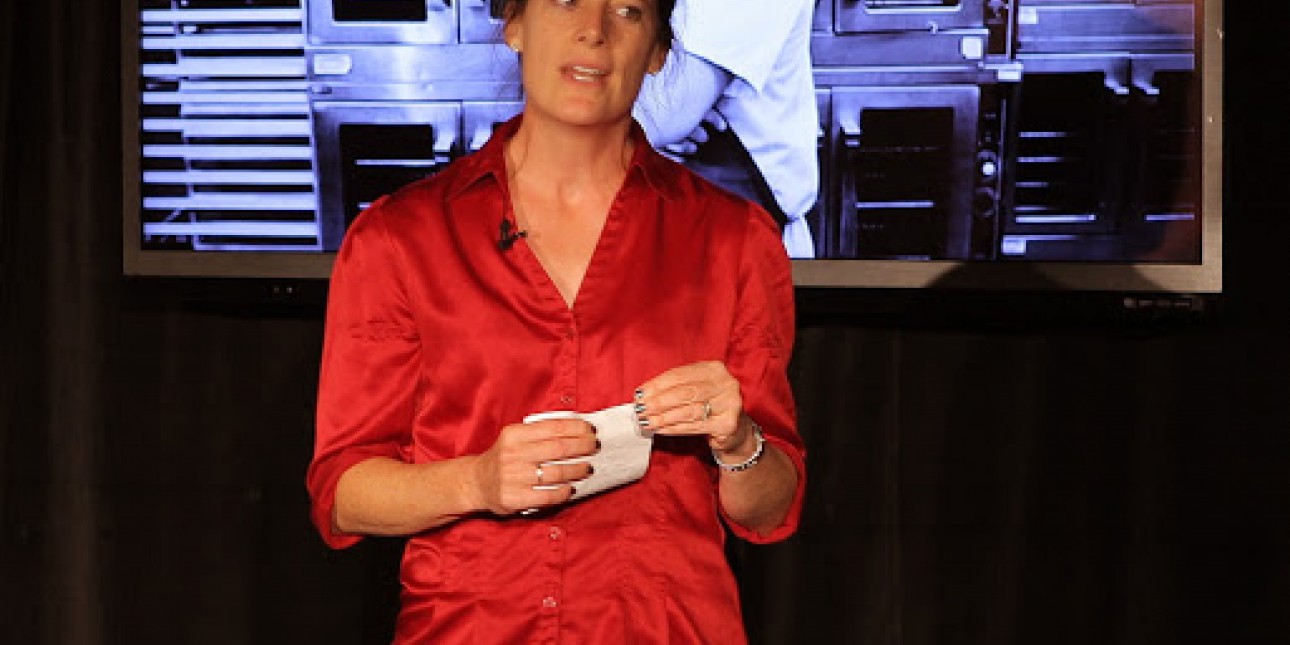Data Storytelling: Effectively Communicating a Problem by Measuring How Many People are Affected

This guest post was written by Tina Kelley, a speaker at Connection 2014 when she was writer-in-residence at Covenant House International. In her presentation at Connection she spoke of the importance of telling the stories of the youth your agencies serve, as well as learning the lessons from our inevitable failures in telling those stories. She spoke of the young people she and Covenant House President Kevin Ryan interviewed for their national bestseller, Almost Home: Helping Kids Move from Homelessness to Hope. You can watch a portion of her presentation below, or watch the full presentation. In this post, she discusses how the stories of young human trafficking survivors can be told through recently collected data, and how crucial such data storytelling is in breaking the pipeline from homelessness to commercial sexual exploitation.
In the presentation I gave at Connection 2014, I shared some thoughts about storytelling, and how we need to help the world get to know the kids we serve, not as “those kids,” but as the strong, endearing, and often inspiring people they are.
Since then we at Covenant House have been working to refine another important aspect of storytelling: data. We are adopting Efforts to Outcomes software in our shelters, to help measure the efficacy of various aspects of our programs, and align our services with best practices in the field. We have been expanding our work in data collection around the issue of human trafficking as well.
In the area of sexual or labor exploitation, particularly that involving homeless youth, figures are exceedingly hard to come by. Homeless youth are hard enough to count, as they hide their homelessness for their own safety. And certainly, homeless young people who have been exploited don’t come in the doors of our shelters, raising their hands and saying yes, they were trafficked and need help. They have learned too well not to trust, not to make themselves vulnerable.
Some of them see their entry into forced prostitution as a choice that made sense at the time, if they were being beaten or sexually abused at home, if they had no place to sleep and no job prospects, if they faced rejection and a lack of opportunity because of their gender identity or sexual expression, or if the only alternative was violence. Getting an accurate number of sex trafficking victims feels like trying to count ghosts – young people working with pimps are forbidden to give their right age, even to the police, or face severe consequences. Many are hidden from view in micro-brothels, or in the seediest crevices of the internet.
We figured that our youth are particularly vulnerable to being trafficked. They come to us because their relationships with their families are broken. Many have been through foster care, or were kicked out of their homes for being LGBTQ, or for getting pregnant. Many have been sexually abused, and most of them lack high school diplomas and jobs. The systems that were supposed to nurture them – families, schools, foster care, health care – have, for the most part, failed them. They have been told that they aren’t good enough, aren’t smart enough, aren’t lovable enough, to amount to anything. They haven’t been taught to be wary of someone, usually much older, making promises that sound too good to be true. They often crave the attention and fake affection offered by pimps, who can spot them from a mile away, and often lurk near shelters, telling kids that no beds are available, offering love, glamour, or flimsy promises of modeling jobs. This is what we knew in our hearts, anecdotally.
But you can’t effectively convince the world that there’s a problem if you can’t measure how many people are affected by it.
To get a handle of the scope of sex and labor trafficking among the 55,000 homeless youth we serve each year, we have partnered with two universities to complete two studies at two of our shelters. With the help of Fordham University’s Applied Developmental Psychology Department, we were able to develop and test a screening tool that could determine how many among a random sample of young people at Covenant House New York had experienced sex or labor trafficking or participated in survival sex. The results, published in 2013, were far more sobering than we could have predicted. While our staff had suspected we served a couple of trafficking survivors each year, we were disheartened to learn that of a random sample of 174 youth between 18 and 23 years old, 14.9% experienced some form of trafficking, consistent with the definition under federal law. An additional 8%, all of whom were over the age of 18, engaged in survival sex. Almost 3% of the sampled youth were forced into labor servitude. This means that approximately one in four of the youth either was a victim of trafficking or had engaged in survival sex at some point. CHNY serves over 3,000 youth each year; as a result, it is possible that CHNY annually serves as many as 700 youth annually who have experienced trafficking or survival sex.
In March, the Modern Slavery Research Project at Loyola University completed a similar study at Covenant House New Orleans, finding that 14 percent of residents had been victims of some form of trafficking, following the federal definition. Eleven percent of the total population had been trafficked for sex, 5 percent for other forced labor. (Two respondents were trafficked for both sex and labor.) As Covenant House New Orleans serves 615 residents ages 16-23 each year, approximately 86 residents a year are likely to be victims of human trafficking.
We have plans to expand the studies to other Covenant House shelters in Los Angeles, Oakland, California, Philadelphia, and Atlantic City and Newark in New Jersey. We are looking forward to being able to analyze the data, ask further questions, and figure out a way to get more services to the kids we work with who have been traumatized by slavery and exploitation. By learning their stories, and the data behind them, we hope to serve them in the most comprehensive way possible. No young person should have to go through the trauma and injury of being trafficked, and collecting solid data and telling their data story is one way to help understand and spread the word about the fight against this scourge.


